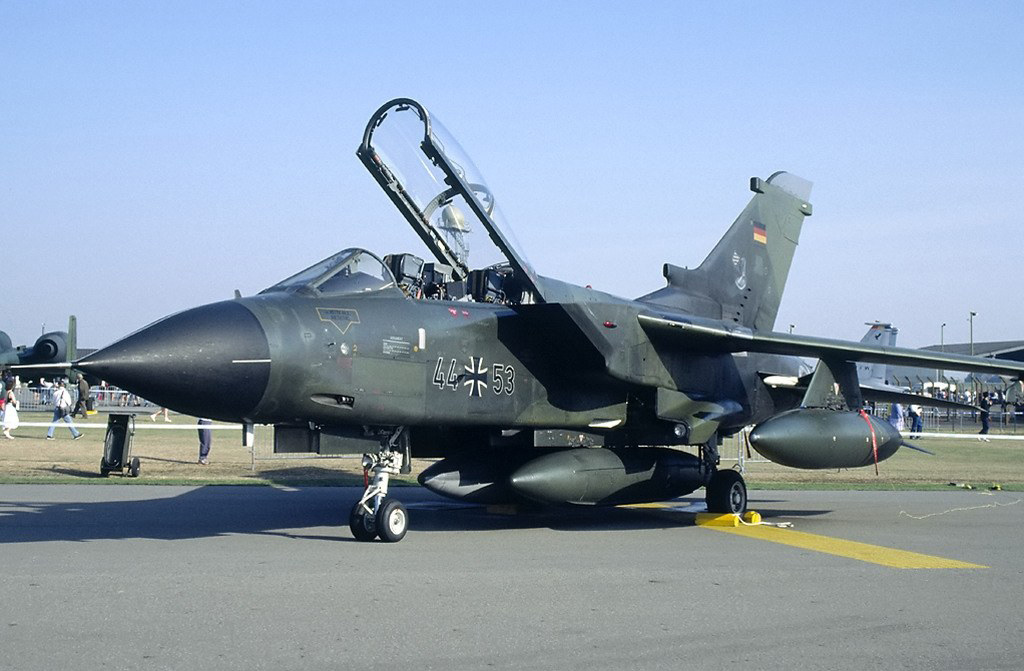
Germany is considering procuring the F-35 strike fighter to replacing its aging swing-wing Tornado aircraft. USAF photo.
The F-35 Joint Program Office confirmed that Germany is taking steps to buy the Lightning II, but these moves are not yet final. A new request for information is in the offing, after Luftwaffe and German government officials received a classified briefing on the Lockheed Martin F-35 in July, a JPO spokesman said.
Germany needs a minimum of 40 stealthy aircraft for strike to replace some of its swing-wing Tornado aircraft, which have been in service since the 1970s. The new jets would complement Germany’s Eurofighter Typhoons.
Jane’s reported that a senior Luftwaffe official said in late October that the F-35 is the “preferred choice” of the German government, offering the required stealth and sensor capabilities, as well as connectivity and interoperability with other NATO air arms. The German government was also looking at F/A-18E/F and F-15E fighters from Boeing as recently as October, and is reportedly also considering a further batch of Typhoons optimized for ground attack, but the Luftwaffe preference is apparently for a “fifth generation” aircraft. A formal decision is expected around June of next year.
Lockheed Martin CEO Marillyn Hewson, in Norway this week for an F-35 delivery ceremony, said her company is working with the German government and naturally believes the F-35 would be the “best choice” for Bonn. She also said that Belgium, Canada, and Finland continue to evaluate the F-35 for their needs.
Britain, Denmark, Italy, the Netherlands, Norway, and Turkey are partners on the F-35, and Italian F-35s are starting to come out of that country’s own Final Assembly and Check-Out facility.
The 85-strong Tornado fleet is showing its age, and German press reports, quoting government documents, have said that less than 30 are mission capable. Full retirement is slated to come no later than 2030, at which point the Luftwaffe will need to have fielded a replacement. Deliveries of new jets would likely be targeted starting in 2025.
Germany and France recently said they are collaborating on a new, indigenous European fifth generation fighter as part of what they call the Future Combat Air System, or FCAS, but they estimate delivery of the fighter element around 2040; too late for the Luftwaffe’s needs. Airbus is taking the lead on that program. The F-35 buy, if it happens, might be a stopgap measure until the FCAS fighter arrives.